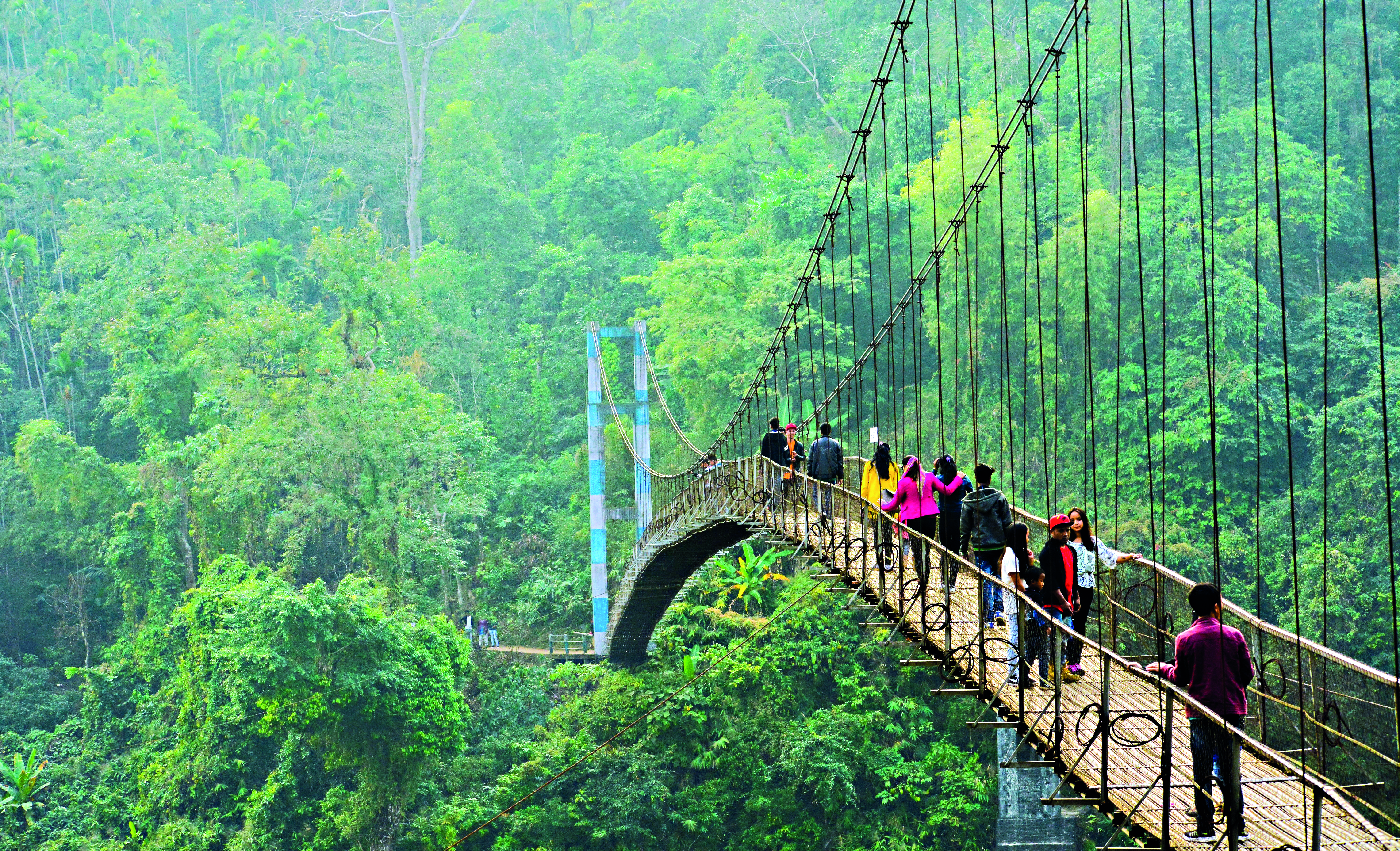Epitome of cleanliness
Away from the cacophony of city life, Mawlynnong, nestled in the East Khasi Hills of Meghalaya, boasts of record cleanliness, unparalleled beauty, and the rich ethos embedded in local life; writes Monjit P.

In the verdant embrace of the East Khasi Hills in Meghalaya, India, lies a village that not only prides itself on its picturesque beauty but also on a title that sets it apart from any other place on the continent: Asia’s cleanest village. Mawlynnong, a small village in Northeast India, is a testament to the harmonious relationship between humans and nature. My journey to this remarkable village was not just a travel expedition; it was a pilgrimage to the sanctum of sustainability and community living.
The journey
The road to Mawlynnong was a winding path through the lush green landscapes of Meghalaya, often referred to as the abode of the clouds. With each turn, the air seemed fresher, and the scenery more captivating. As the urban sprawl gave way to dense forests and cascading waterfalls, I could sense the shift not just in the landscape but also in the ethos that governs life here.
Arriving in Mawlynnong, the first thing that struck me was the pristine cleanliness of the place. There wasn’t a single piece of trash in sight, a stark contrast to
the urban centres I was accustomed to. The streets were lined with bamboo dustbins, ensuring waste had its designated place. It was evident that the title of Asia’s cleanest village was not an accolade merely bestowed upon Mawlynnong; it was a way of life for its inhabitants.
Living bridges and floral paths
As I meandered through the village, the symbiotic relationship between the villagers and their environment became increasingly apparent. The living root bridges, a marvel of bio-engineering, exemplified this bond. These bridges, made from the aerial roots of rubber fig trees, are not built but grown over generations, a testament to the foresight and environmental wisdom of the Khasi people. Walking through Mawlynnong, the air was filled with the fragrance of blooming flowers, neatly adorning the fronts of the thatched Khasi huts. The village was a kaleidoscope of colours, with orchids, hibiscuses, and rhododendrons painting a vibrant picture against the backdrop of lush greenery. It was as if the entire village was in a perpetual state of bloom, a living testament to the care and devotion with which the villagers tended to their environment.
The pillars of Mawlynnong
The true essence of Mawlynnong, however, lay in its people. Their warmth and hospitality were as natural and inviting as the landscape that surrounded us. Conversing with the villagers, I learned about the matrilineal society of the Khasis, where lineage and inheritance are traced through the mother. This matriarchal system, they explained, contributed significantly to the respect and preservation of nature, viewing it as a nurturing mother figure.
Education, I observed, was another pillar upon which the village stood. Children, fluent in English alongside their native Khasi, were keen to share stories about their village and its customs. It was clear that the community placed immense value on education, viewing it as integral to their progress and sustainability.
A testament to sustainable living
What struck me most about Mawlynnong was the seamless integration of traditional practices with sustainable living. The villagers utilised every aspect of their environment thoughtfully and efficiently, from rainwater harvesting to organic farming. It was a living classroom, demonstrating the profound impact of collective action and communal responsibility in preserving the environment.
One evening, as I sat down to a meal with a local family, I was treated to a feast of local delicacies, each ingredient sourced from their gardens or the surrounding forests. The simplicity of the meal, devoid of any artificial flavours or additives, was a refreshing experience, reminiscent of a connection to the earth that many of us in the urban world have long forgotten.
The sky view
No visit to Mawlynnong would be complete without climbing the Sky View, a bamboo structure towering 85 feet above the ground. As I ascended the structure, the panoramic view that greeted me at the top was nothing short of breathtaking. Overlooking the vast expanse of the Bangladesh plains, the viewpoint offered a moment of profound clarity and reflection on the insignificance of man-made borders against the majesty of nature.
Departure with a promise
Leaving Mawlynnong was not easy. The village, with its unparalleled beauty and the ethos of its people, had etched a permanent mark on my heart. It was a poignant reminder of the delicate balance between human existence and nature, a balance that Mawlynnong has mastered and preserved. As I journeyed back to the cacophony of city life, I carried with me not just memories of a place of extraordinary beauty but also lessons in sustainability, community, and the art of living in harmony with nature. Mawlynnong stands as a beacon of hope, a testament to what can be achieved when a community comes together to respect and protect their natural heritage. In today’s world, where the pace of life often disconnects us from our environment, Mawlynnong serves as a vital reminder of the fundamental principles of sustainability and communal living. It is a call to each of us to imbibe these principles in our lives, to create a world where nature and humanity coexist in harmony and mutual respect. My journey to Mawlynnong was a voyage of discovery, not just of a place, but of the possibilities that await when we align our lives with the rhythms of the natural world.
The writer is a freelance travel journalist.




